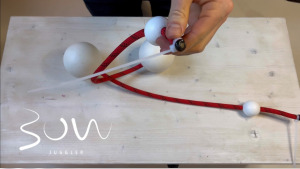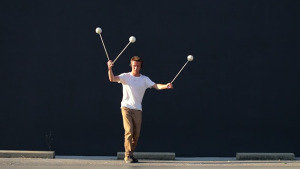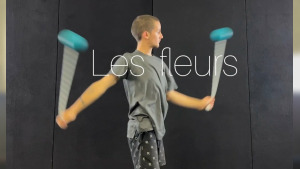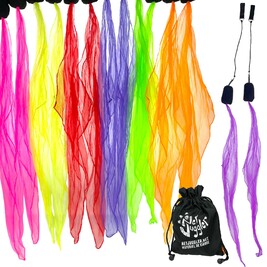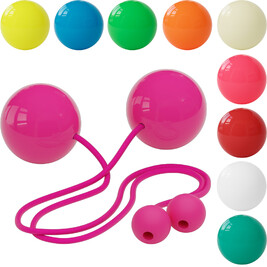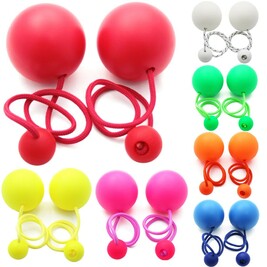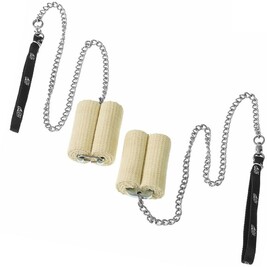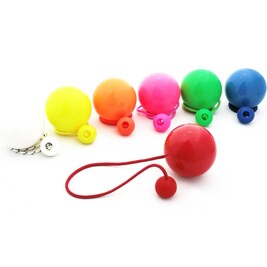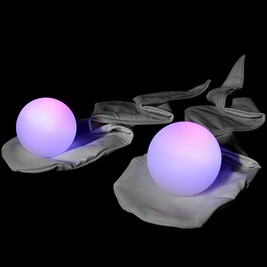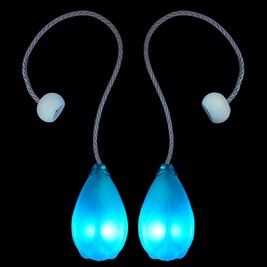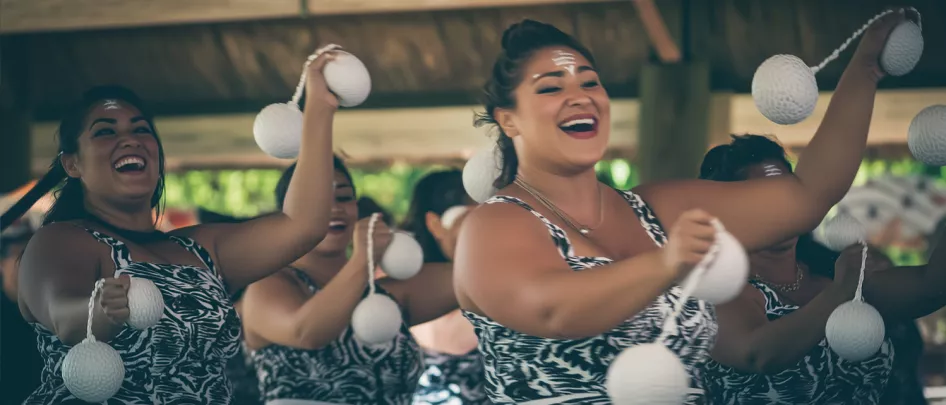
Complete guide to choosing your juggling bolas
Introduction
Juggling is an ancient art that fascinates with its grace and diversity. Juggling bolas occupy a special place among the most captivating disciplines. Originating from distant cultures, they have survived the ages to become a tool of artistic expression prized by jugglers around the world. Whether you're a beginner or an experienced juggler , this comprehensive guide will help you choose the bolas that best suit your needs and style.
Origin and history of juggling bolas
The Māori origins of juggling bolas in New Zealand
The term " poi " comes from the Māori culture of New Zealand and literally means " ball attached to a rope ." Originally, poi were used by Māori women to keep their hands flexible for weaving, while men used them to develop strength and coordination , particularly for hunting and fighting.
Bolas have also played an important symbolic role. During the Māori Wars of the 19th century, they became a symbol of resistance against the British colonial government. Incorporated into kapa haka (traditional Māori performance), they were used in dances that combined song and rhythmic movement, where the sound of the bolas striking the body added a musical dimension.
The Evolution of Juggling Bolas Around the World
Over time, bolas spread beyond New Zealand to inspire other cultures and practices. In the 1800s, Indian club swinging influenced the art of juggling in the West. Later, in the 1980s, " glowstringing " emerged in the rave scenes of the United States and the United Kingdom, using glow sticks attached to strings to create spectacular visual effects.
Ronan McLaughlin revolutionized modern practice with the introduction of contact bolas , featuring plastic balls attached to counterweights by a cord, opening the way to new technical and artistic possibilities.
The different types of juggling bolas
Juggling balls for beginners
Sock balls : ideal for starting juggling

Ideal for beginners, sock bolas are affordable and easy to handle. Made from socks that can be filled with various materials ( rice , lentils , juggling balls ), they allow you to adjust the weight according to your preferences. Their flexibility makes them perfect for learning indoors.
Helpful tip : For added comfort, fill them with flour wrapped in cling film. Avoid tennis balls , which are too hard and potentially dangerous.
Conical balls : to master stopping figures
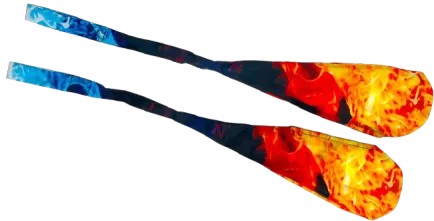
Made of waterproof nylon , the conical balls are non-stretch, providing constant tension that facilitates tricks based on the stops . Their weather resistance makes them ideal for outdoor use, even in the rain.
Bolas scarves and bolas ribbons : for a graceful style
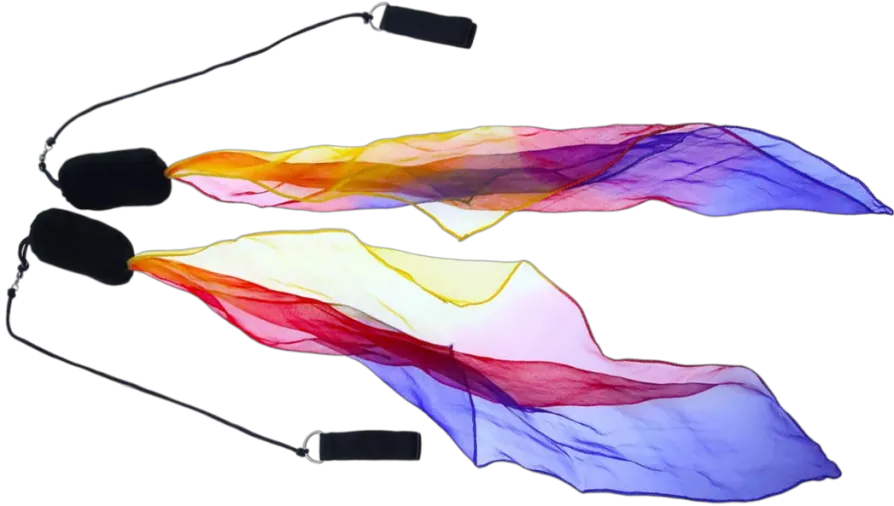
Visually appealing, scarf bolas are lightweight and made of weights attached to colorful scarves . They offer fluid and graceful movements, ideal for focusing on aesthetics . Ribbon bolas , on the other hand, are suitable for both children and adults, with adjustable cords for optimal comfort.
Juggling balls for experienced jugglers
Contact balls : for advanced tricks
Contact bolas are designed for isolations , throws and body rolls . Available in different sizes ( 80 mm , 90 mm , 100 mm ), they allow you to integrate contact and make precise stops . The 100 mm size is particularly appreciated by experienced jugglers for its precision , although it can be tiring for beginners. To learn more about the discipline, I have put a short video of Bow below.
Light-up bolas : for spectacular nighttime performances
Perfect for nighttime performances, light-up bolas create stunning visual effects. Several models are available:
- Luminous Bolas Ties : provide a color fade effect.
- Bolas PodPoi V2 : High-end, with many adjustable modes and features, including wireless syncing .
- Luminous contact bolas : combine the flexibility of contact bolas with luminous effects.
- Bolas Vision : allows you to project rotating graphic visuals , for unique performances.
Fire balls : for juggling experts
Reserved for experienced jugglers, the flaming bolas offer an impressive spectacle. Equipped with wicks soaked in fuel , they require advanced technical mastery and strict compliance with safety instructions .
How to choose the right size of contact balls
The size of the bolas greatly influences the practice and comfort of the juggler:
- 80 mm : ideal for beginners or people of smaller build . Light and less tiring, they allow for rapid practice, although less precise.
- 90 mm : versatile, they offer a good balance between maneuverability and precision . Popular with women and average-sized jugglers.
- 100 mm (Giga) : heavier, they offer maximum precision for stops and contact figures . However, they are more physically demanding.
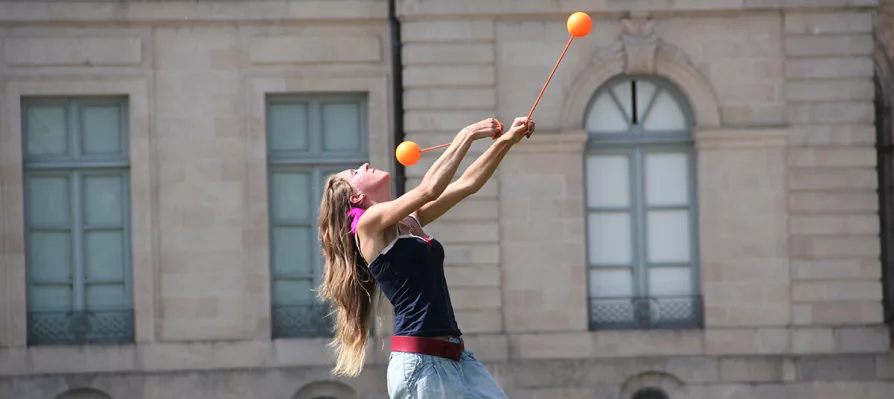
Tips:
- String length : Adjust the length according to your height. A general rule is that, with handles in hand, the heads of the bolas should reach under your armpits .
- Experiment : Feel free to experiment with different sizes and lengths to find what works best for you.
Tips for getting started with bola juggling
Choose the right material : To begin with, opt for light and easy-to-handle bolas , such as sock bolas or scarf bolas .
Practice regularly : Juggling requires patience and perseverance . Devote time to practice to progress.
Use learning resources : There are many online tutorials , books , and workshops that can help you learn new tricks and techniques.
Safety First : Avoid crowded spaces to practice and make sure you have enough space around you.
The benefits of practicing juggling bolas
Juggling with bolas offers multiple benefits:
- Physical : Improved coordination , balance , flexibility and muscle tone in the arms , shoulders and torso .
- Mental : Development of concentration , patience and self-confidence . Reduction of stress and promotion of relaxation .
FAQ about juggling bolas
What type of bolas is best for beginners ?
Sock bolas , scarf bolas and conical bolas are ideal for beginners because of their lightness and ease of use . They allow you to focus on the basics without worrying about technical complexity.
How to fill sock bolas ?
- Juggling balls : offer good weight and maneuverability.
- Rice or lentils : economical and easy to find.
- Balloons filled with flour or semolina: for soft and painless bolas .
Caution : Avoid materials that are too hard, which will be less comfortable.
Where can I learn to juggle with bolas ?
Online Tutorials : Many videos and guides are available for free.
Courses and workshops : Check with local circus schools or associations.
Specialized books : These offer detailed instructions for progress.
What is the ideal length for my bola strings?
The ideal length varies depending on your height:
- General rule : The heads of the bolas should reach under your armpits when you hold the handles.
- Adjustment : You can easily adjust the length by tying a knot and cutting off the excess.
Comments
!Be the First to comment!
80mm professional contact poi
Professional contact poi with silicone handles (mini bouncing ball).
